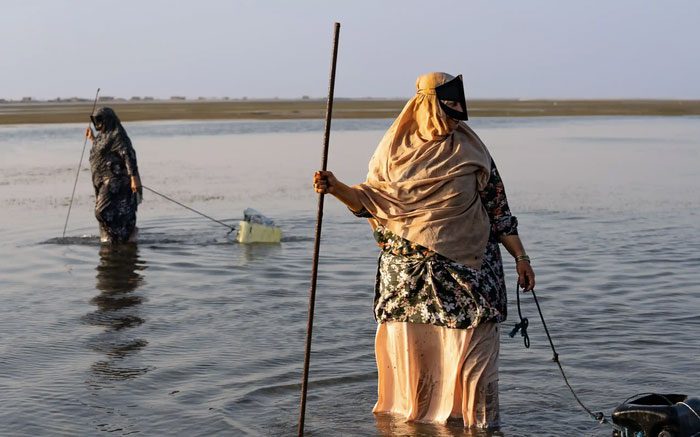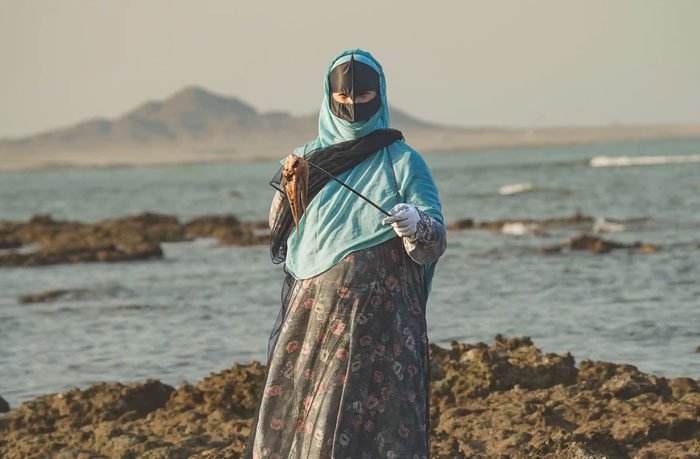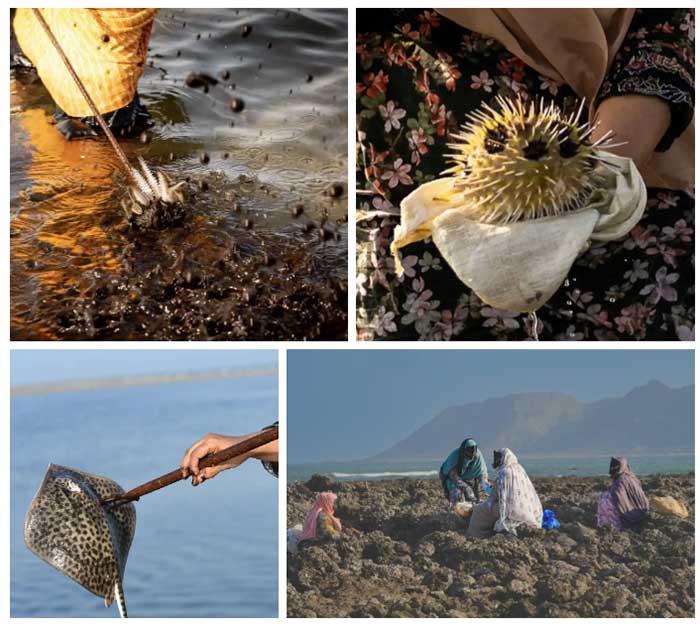The female fishermen of the Bedouin tribe living along the coast of Oman still go out to sea every day to fish. However, they may be the last generation as fewer people are willing to continue this traditional work.
Khaleedah al-Hokmani, with bare feet, walks steadily through the murky waters, holding a rusty iron spear. She moves silently until she thrusts the spear into the water, creating a sound that echoes like a deflating balloon. Moments later, a silver cuttlefish surfaces, spraying black ink on her clothes. Without hesitation, the woman tears the cuttlefish into pieces.
She notes that this cuttlefish is female and contains eggs; she separates the cuttlefish eggs and eats them directly. A bag of green ink remains between her fingers after she has drained the ink sac. Hokmani smiles, revealing her blackened teeth.
She affirms: “This is how we boost our health.”
This is how about 400 Bedouin female fishermen catch various invertebrates. They have inherited this method from their mothers. This work has become so ingrained and rooted in Oman that the female fishermen hold an “exclusive” right to fish.
They are referred to by locals as rahas. Armed only with spears, they hunt cuttlefish, rays, and octopuses, while also scouring the coasts for oysters and clams to sell in local markets.


Women inheriting hunting methods from their mothers.
The Decline of Traditional Fishing Practices
However, in the context of increasing commercialization of the fishing industry, which is primarily male-dominated, the work of these female fishermen is increasingly being pushed into decline, and may even disappear.
Most of the female fishermen live and work in Mahout, a remote coastal town consisting of 17,000 families from the Bedouin tribe. Mahout is located in the Al Wusta province, the most productive fishing area in Oman.
Although the country relies on small-scale fishing for over 95% of its needs, it is heavily investing in offshore fishing projects. For example, a seafood canning factory worth 24 million Omani riyals (approximately 1.438 trillion VND) is being established in Al Wusta, with plans to open in 2024 and to acquire three large fishing vessels.
Farha al-Kindi, founder of the seafood company Sea Delights, states that while the expansion of the fishing industry aims to create opportunities for local fishermen and foreign laborers, these projects have not had a significant impact on the female fishermen on the island.
For Hokmani, who has been taught the spear fishing technique, her fishing work now feels more precarious than ever. She is now divorced and raising eight children. In the mornings, she drives a bus to earn extra income aside from her primary earnings from fishing.
Hokmani and other female fishermen form a group. To catch fish, they drive 50 km from home to their work area, bringing along equipment such as iron spears, plastic fuel boxes with ropes for pulling in fish, as well as tea and snacks.
As a seasoned member, she leads her group in fishing. After two hours of fishing, she has collected: 20 cuttlefish, 2 rays, and nearly 30 shells.

Women showcasing their catch
A similar situation occurs in Masirah, Oman’s largest island, where Bedouin female fishermen have long harvested freshwater mollusks. Here, Shefya al-Farsi, 58, has been in the profession for 40 years. However, her daughters have not learned the trade; instead, they choose to attend university and aspire to work in the city.
Farsi shares: “I wish my children would continue my work. We want this job to be passed down to the next generation. But now, it seems very few women are interested in this profession.”
In the distance, two male fishermen on a small boat are casting nets into deeper waters. With government subsidies, their equipment is very modern, in stark contrast to the primitive tools that the female fishermen make themselves.
Kindi states: “We do not want this work to disappear. We still want to use traditional fishing methods, and we also want the government to support us and create a better environment to pass down the trade to girls.”


















































